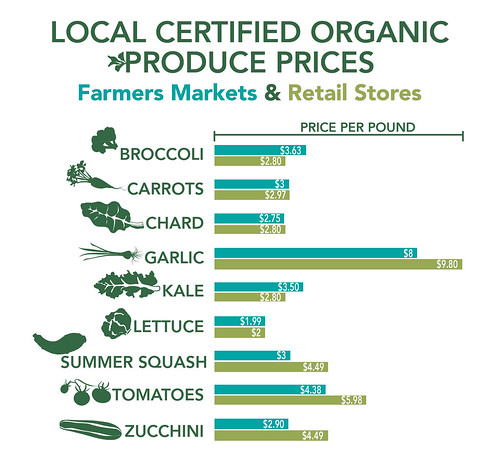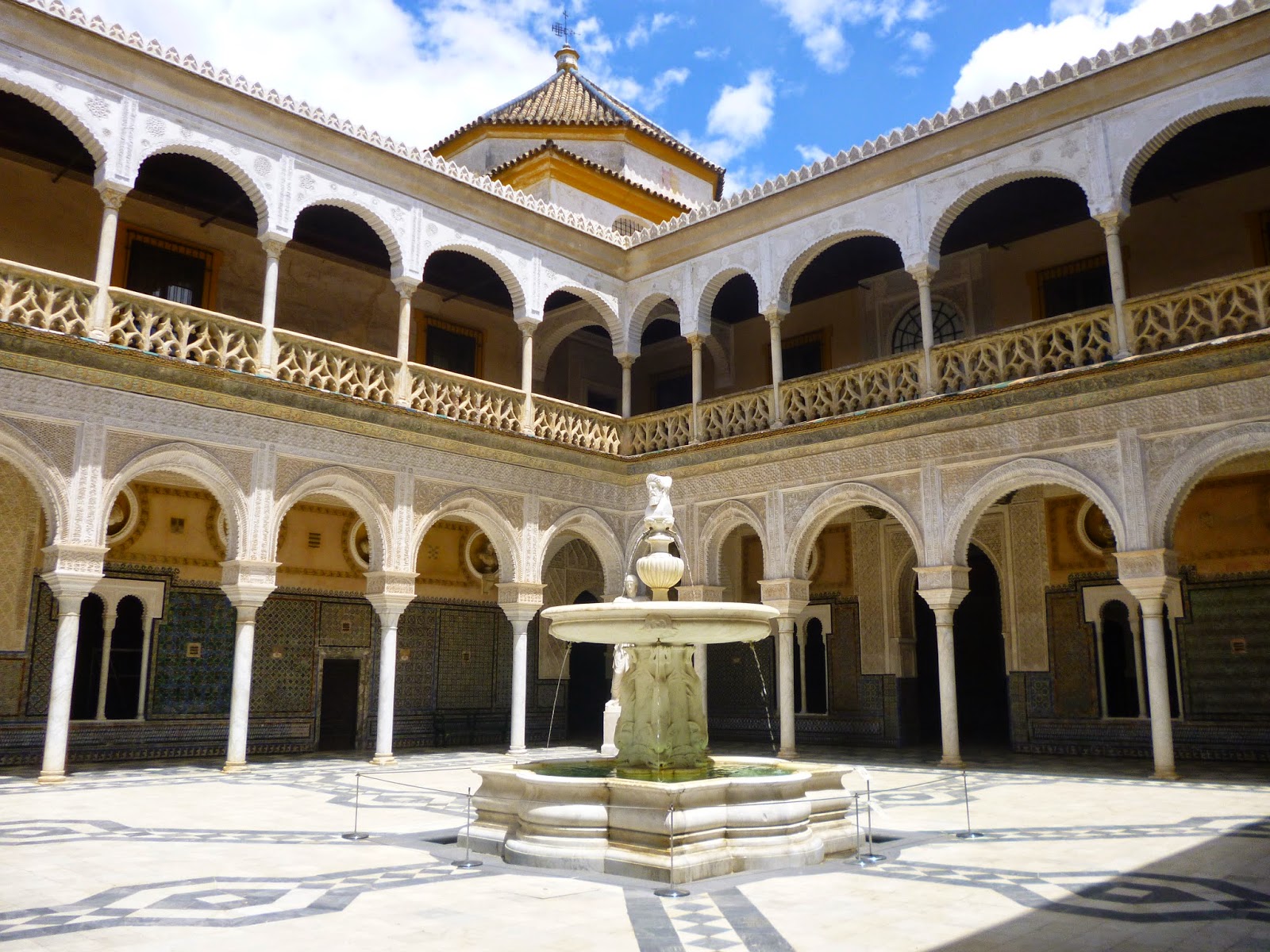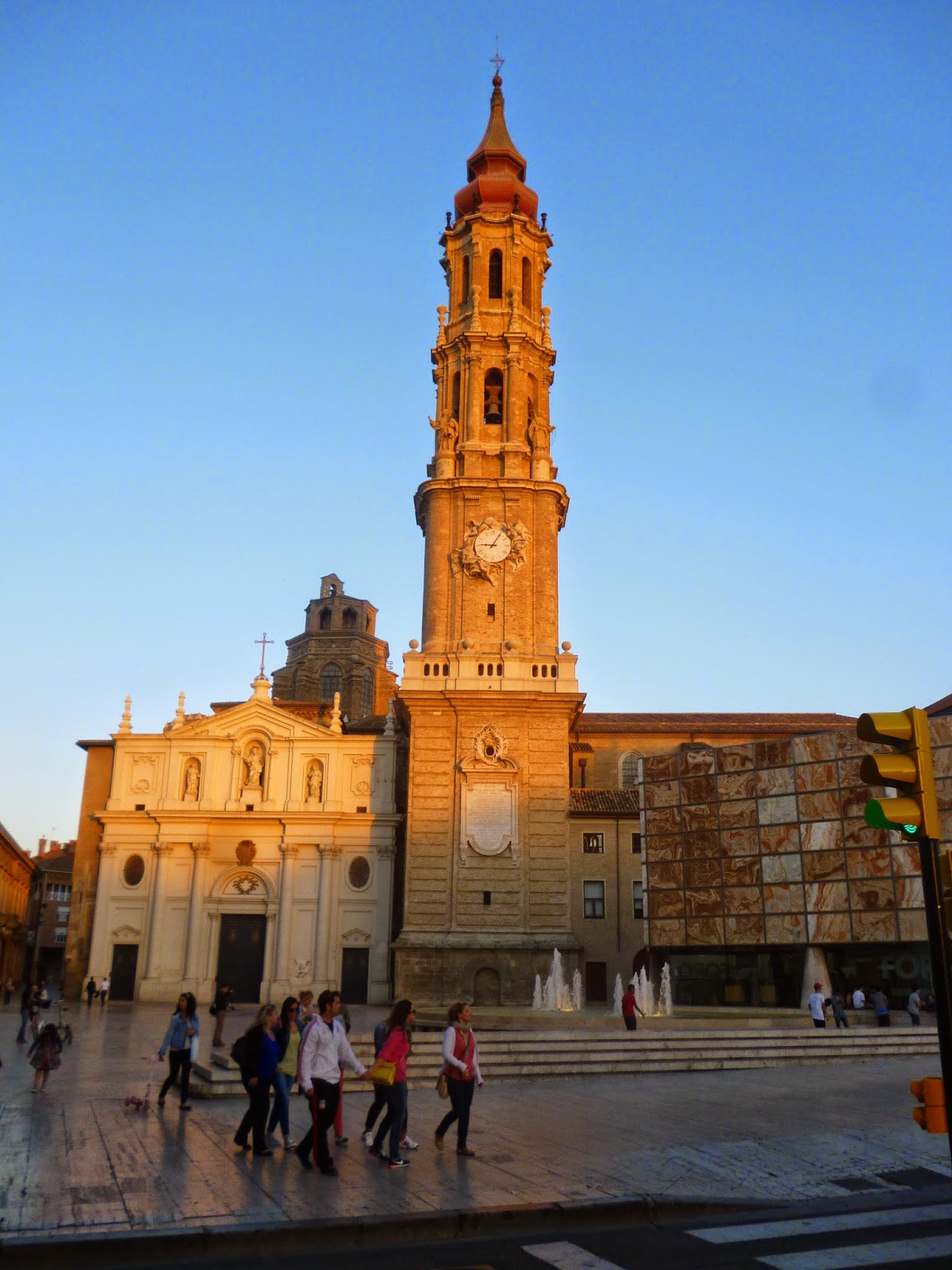How to Survive with out Gourmet Kale Chips:
An Analysis of Food Accessibility Among San Francisco's Latino Population
By Louisa Jerome
Geography 274: Social Justice and the City
Although Spanish conquistadors were some of the first Europeans to settle in North America, recent Spanish speaking immigrants from throughout Central and South America are one of the more marginalized populations in the United States. This past summer I interned with the Burlington, VT based non-profit, Migrant Justice, which helps improve migrant workers rights in the state of Vermont. During my internship I worked on establishing a food truck that would bring culturally appropriate food to migrant workers living in rural Vermont. Prior to this experience I had no idea how the Hispanic population in the United States was at risk of food inaccessibility. Thus, for my final project I thought it would be interesting to investigate this subject further but while using San Francisco, California as the main focus for this project.
| 16th and Valencia Streets. http://www.sfgate.com/neighborhoods/sf/mission_16thstreet/ |
Even though San Francisco was founded by Mexican missionaries the population has been marginalized, through processes like gentrification. Malo Huston’s article San Francisco: The fight to preserve the Mission District describes the current processes of trying to gentrify the Mission District, an area known for its Hispanic population. After WWII lots of immigrants from Latin America, mostly moving to the area around the lower 24th Street, now the Mission District. Below I have attached three maps of the Mission District's Hispanic population, SNAP and Farmers Markets locations. Below is the map of the Hispanic population. One can see that the Hispanic population is consolidated into a few particular areas and are subject to discrimination.

 |
| The Mission District within San Francisco. https://upload.wikimedia.org/wikipedia/commons/d/d4/SF_Mission_map.png |

In San Francisco 15% of the workforce is Hispanic, the majority of whom work in construction, transportation, or manufacturing, some of whom are recent immigrants (2015). If they are working minimum wage, which is currently $13 per hour (but if they are recent immigrants and not familiar with English then it will likely be less), then Hispanic employees are barely making it by, especially if they are the only person working in a household (2015). Considering that the average rent in 2016 was $3716, plus $200 in bills, a family will only have $700 of disposable income (2015). These families do not qualify for benefits. In order to receive food stamps one needs to make $10,000 (Hispanic families live on an income of $24,000) (2015). Even though $700 is a enough to get by it is not enough to buy healthy nutritious foods. Due to hip trends and the desire for tech workers to buy high quality food, health food at farmers markets and decent grocery stores is overly expensive. At the Ferry Building Farmer’s Market a block of Cabot Cheese, which is sold in Vermont for $6.00 a pound, is sold for $23.00 a pound. This is far out of the price range for working class Hispanic families. According to Paula Jones and Rajiv Bhatia (2011) there are very few farmers markets in San Francisco that accept Supplemental Nutrition Assistance Program (SNAP), formerly known as food stamps. Income is one of the main barriers that prevents the Hispanic population from having access to healthy foods but that could be diminished if the government provided more assistance programs and tried to adjust prices so that more people could buy fresh produce in local supermarkets and farmers markets.
 |
| Main corridor of San Francisco's Ferry Building Farmers Market http://www.tinyurbankitchen.com/ferry-building-market/ |
 The causes for food inaccessibility include low incomes, the situation described above, and distances distances of grocery stores. Through a series of studies it has been proven that supermarkets are disproportionately distributed within white, middle to higher class neighborhoods, while convenient stores dominate non-White, lower class neighborhoods. Supermarkets are less likely to move to low income communities because they think that they will be unable to make a sufficient profit from the community. Thus, people from low income communities are forced to travel farther distances in order to get affordable and nutritious foods. Studies have shown people will travel an average of 1.58 miles to supermarkets and 0.65 to convenient stores (Algert 2006). Also, due to low incomes ($1000 a month) families reported that they were only able to buy six to seven fresh fruits and vegetables a month (2006).
The causes for food inaccessibility include low incomes, the situation described above, and distances distances of grocery stores. Through a series of studies it has been proven that supermarkets are disproportionately distributed within white, middle to higher class neighborhoods, while convenient stores dominate non-White, lower class neighborhoods. Supermarkets are less likely to move to low income communities because they think that they will be unable to make a sufficient profit from the community. Thus, people from low income communities are forced to travel farther distances in order to get affordable and nutritious foods. Studies have shown people will travel an average of 1.58 miles to supermarkets and 0.65 to convenient stores (Algert 2006). Also, due to low incomes ($1000 a month) families reported that they were only able to buy six to seven fresh fruits and vegetables a month (2006).
As can be seen through the maps above and below the Mission District has multiple SNAP locations (which includes both grocery and convenient stores) but concerning the census block groups with more than 2600 Hispanic residents SNAP locations are sparsely spread out or located around the periphery. In order for those living in poverty the government provides the Supplemental Nutritional Assistance Program (SNAP), formerly known as food stamps. The SNAP map shows that the majority of the SNAP locations are disproportionately distanced from dense Hispanic areas. Even thought one would believe that San Francisco's farmers markets would be the next best option they are actually incredibly overpriced, especially for working class Hispanic families.
San Francisco is also well known for it’s localvore culture. Farmers markets are spotted throughout the city but through the maps one can see that there are only two farmers markets in the Mission District, both of which are inaccessible for the Hispanic community.The two farmers markets in the southernmost part of the neighborhood and the produce is overly expensive. If individuals want to buy affordable produce, instead of paying five dollars a pound for squash, they have to travel to the northeast corner of the city, where the majority of the supermarkets are located. This means that the Hispanic population has to travel by public transportation. Due to the distances of supermarkets and limited incomes the main effects of food inaccessibility include diabetes. Since convenient stores are the closest stores to access food people are more likely to buy cheap, non-nutritious foods, like soft beverages and junk food.
San Francisco is also well known for it’s localvore culture. Farmers markets are spotted throughout the city but through the maps one can see that there are only two farmers markets in the Mission District, both of which are inaccessible for the Hispanic community.The two farmers markets in the southernmost part of the neighborhood and the produce is overly expensive. If individuals want to buy affordable produce, instead of paying five dollars a pound for squash, they have to travel to the northeast corner of the city, where the majority of the supermarkets are located. This means that the Hispanic population has to travel by public transportation. Due to the distances of supermarkets and limited incomes the main effects of food inaccessibility include diabetes. Since convenient stores are the closest stores to access food people are more likely to buy cheap, non-nutritious foods, like soft beverages and junk food.
 |
| http://blogs.usda.gov/2016/05/19/local-and-organic-food-shopping-finding-the-best-price/ |

Food inaccessibility among San Francisco’s Hispanic population has been recognized as a legitimate problem and several campaigns have been started in order to solve the issue. For instance, nine corner stores have received funding from the non-profit, Healthy Retailer, to stock their stores with fresh food, which has helped get rid of “food deserts,” considering that closer stores selling fruits and vegetables means better health for residents. Small businesses are given $15,000-$20,000 to improve their stores (new refrigeration, computers, and marketing campaigns) and said that their sales have increased by 25%. On November 30th San Francisco was given forty five million dollars to improve small businesses in low income neighborhoods in hope to have new grocery stores, child care facilities, non profit offices and community centers. This initiative is important because in order for Hispanic communities to become healthier they need to economically sustain themselves, which Erik Arguello, head of the non-profit organization Calle 24, states in a hearing a year ago against increasing Air BnB locations in the Mission District.
Erik Arguello, Calle 24, San Francisco Latino Culture District in The Mission District.
https://www.youtube.com/watch?v=q8BoSJ6Q5uo&t=5s&ab_channel=AuroraGrajeda
For urban social justice to be achieved it is important to have a just decision making process. Before the official decision making there must be an unbiased investigation on the concerned material. When all the necessary data is collected the decision making process may begin. For the process to be just, the decision making committee must be democratic and have members match a proportional percentage of the demographic that is being represented. In San Francisco there have been several organizations that have been established in order to fight food inaccessibility. Unless policy makers come upon a constructive solution for food accessibility all of the previously discussed factors will cause for there to be an even greater increase in diabetes cases and obesity among low income American populations, particularly San Francisco’s Hispanic population. In San Francisco there are already several non profit organizations, such as the Free Farm Stand, which distributes free locally grown, within city limits, to those living in Hispanic neighborhoods (2016). Phat Beets Produce (2016), an organization based in Oakland, is another organization that tries to form a more accessible and healthy food system for low income populations by connecting them with local urban farmers. This form of just decision making would be effective at the local level but if it continues to be successful it could spread to the national level, helping social justice to be established.
Works Cited
Algert, SJ. "Disparities in Access to Fresh Produce in Low-Income Neighborhoods in
LosAngeles." American Journal of Preventive Medicine. 30.5 (2006): 365-70.
Cihuamexica. "Erik Arguello, Calle 24, San Francisco Latino Culture District in
The Mission." YouTube. YouTube, 07 May 2015. Web.
13 Dec. 2016.
Data Access and Dissemination Systems (DADS), US Census Bureau. "American
Fact Finder." US Census Bureau. U.S. Census Bureau, n.d. http://factfinder.census.gov/.
Web. 08 Nov. 2016.
Hammersmith, Carrollyn. SSD, Web Services Staff. "United States Census Bureau."
2010 TIGER/Line Shapefiles. United States Census, 2016.
Hutson, Malo Andre. San Francisco: The fight to preserve the Mission District in The
Urban Struggle for Economic, Environmental and Social Justice: Deepening Their
Roots. Routledge, 2015. 85-115.
Johnson, Lizzie. "SF Helps Stores Turn Corner on Health in Food Deserts." San Francisco
Chronicles. The San Francisco Chronicle, 28 Oct.
"Online GIS Maps | PolicyMap." Online GIS Maps | PolicyMap. Policy Map, 2016.
Phat Beets Produce. "About." Phat Beets Produce. Phat Beets Produce, 2016.
http://www.phatbeetsproduce.org/farmers-markets/. Web. 11 Nov. 2016.
Sawyer, Nuala. "$45M Allocated to Building Businesses and Nonprofits in SF’s Low-income
Communities." The San Francisco Examiner. The San Francisco Examiner, 02 Dec.
sfs-low-income-communities/. 12 Dec. 2016.
Stewart, Chris. "16th & Valencia Streets." SFGate. SFGate, 2016. Web.
http://www.sfgate.com/neighborhoods/sf/mission_16thstreet/. 04 Dec. 2016.
Finding the Best Price." USDA Blog RSS 2. United States Drug Administration, 2016.
Web. http://blogs.usda.gov/2016/05/19/local-and-organic-food-shopping-finding-the-
best-price/. 14 Dec. 2016.
Wikiwand. "Mission District (San Francisco) | Wikiwand." Wikiwand. Wikiwand, 2016.
Web. https://upload.wikimedia.org/wikipedia/commons/d/d4/SF_Mission_map.png
14 Dec. 2016.

























